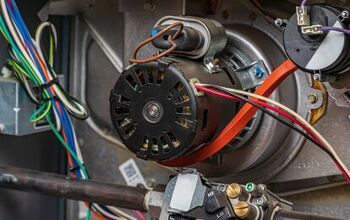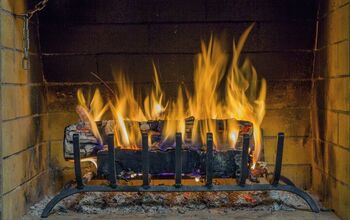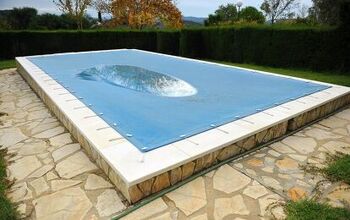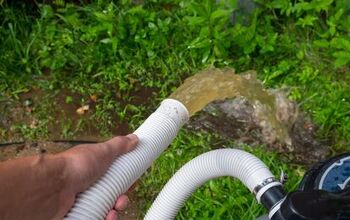What Size Furnace Blower Motor Do I Need? (Find Out Now!)

If you’ve heard much talk about furnaces and their specific components, you’ve likely come across the term “blower.” The blower, or blower motor, is one of the most essential components of your furnace.
So, if your furnace blower motor has failed recently and needs to be replaced, you may find yourself asking: What size furnace blower motor do I need? And, we’re here to help!
To purchase a new furnace blower motor, you’ll need to examine the faceplate on your old furnace blower motor for a model number. This model number can be used to match up to your replacement. Though, if you cannot find an exact model number replacement, a universal replacement blower motor that has the same HP, RPM, amp, voltage, speed, and shaft size will work.
Continue reading to learn more about what a furnace blower motor is, how it works, what can cause it to fail, some common signs that indicate you need a replacement, and how to properly size your furnace blower motor.
Do You Need a Furnace Repair Contractor?
Get free, zero-commitment quotes from pro contractors near you.

What is a Furnace Blower Motor?
The blower motor and blower fan in a furnace are often referred to together as simple the “blower.” It is appropriately named, as its job is to blow heated air through the ducts in your home when the heating system is in use. There are two primary types of blower motors: single-speed motors and variable-speed motors.
As the name suggests, single-speed blower motors blow the air at one single speed. Variable-speed motors, on the other hand, adjust their speed to blow hot air at varying speed levels. An appropriately functioning blower motor is crucial to your home’s HVAC system, as it helps maintain a comfortable temperature in your home.
Direct Drive vs. Belt Drive
The two main types of drives in furnace blower motors are direct drive motors and belt drive motors. Direct drive motors are the most common type found in residential furnaces. They are installed directly to the blower wheel.
Whereas, belt drive motors are less common for residential units and involve the motor pulley being connected to a fan pulley that is mounted on a shaft to turn the blower wheel. This type is usually on very old furnaces or in commercial HVAC systems.
How Does a Furnace Blower Motor Work?
Thermostats work with your home’s heating and cooling systems to observe the temperature. When the temperature drops below the setting on the thermostat, it signals the furnace to kick on. At this point, the furnace generates hot (or cold) air, which will then need to be distributed throughout the various rooms in your home.
This is where the blower motor comes in. The blower motor takes this heated or cooled air inside of the furnace and circulates it throughout your home to ensure that the temperature reaches what is indicated on the thermostat. It does this by rotating a fan, which blows the air through your home’s ventilation system. Even a small blower motor has the ability to move a large volume of air.
What Causes Blower Motor Failure?
Like all other components of your HVAC system, the blower motor can simply wear down over time. Some of the most common reasons that a blower motor fails include excessive moisture and overheating. When dirt, dust, and other debris build up on the inner mechanisms over time, it can cause the bearings and windings to burn up faster.
Blower motors that get clogged with debris or become too saturated with moisture can fail, whether it be as a result of electrical shorts or being overworked. When it comes to replacing the blower motor in your HVAC system, you must consider how often you are having to pay for repairs. Most furnaces in residential settings should last between fifteen and twenty years.
Though, having routine HVAC maintenance performed by a professional can help extend the life of your furnace even further. On the other hand, if you have to pay to have the blower motor replaced every couple years and the life of the furnace is getting even older, it may make the most sense to replace your entire furnace to avoid more frequent repairs.
Signs Your Furnace Needs a New Blower Motor
The following are some tell-tale signs that your furnace blower may need to be repaired or replaced entirely.
1. Poor airflow from the vents
Poor airflow coming from your air vents is often the first and most apparent sign that your blower motor needs replacing. This may indicate that the motor is clogged with dust and dirt, has a faulty capacitor, it’s malfunctioning, or you have leaky air ducts. If you’re experiencing weak airflow out of your vents, a licensed HVAC professional will be able to tell you exactly what the problem is.
2. No airflow from the vents
If you have no air coming out of your vents at all when turn on your HVAC system, it’s likely that the blower motor has failed. At this point, getting a replacement blower motor is probably your only option. Though, a faulty thermostat, bad relay, or fan control problem are other possible reasons for no airflow from the vents.
3. Weird noises when you turn the heat on
If you hear strange clanking, rattling, screeching, or squealing noises when you turn on your furnace, you should call an HVAC technician right away. While some issues may be quick fixes, others may require a blower motor replacement.
4. Skyrocketing utility bills
The blower motor is one of the key components in your entire HVAC system, consuming the most energy. Blowers that are clogged with debris must work harder to push conditioned around through your home’s ventilation system. Or, a blower motor may need to work harder if it’s deteriorating. In either case, this will result in a sudden increase in your energy bills.
5. An overheating blower
If your blower motor is overheating, one of the clearest signs will be a burning smell coming from your air vents whenever you run the heat. Another strong indication is when the blower stops running while the heat is on or the system shuts down completely.
Do You Need a Furnace Repair Contractor?
Get free, zero-commitment quotes from pro contractors near you.

What Size Furnace Blower Motor Do I Need?
When it’s time to replace your furnace blower motor, you’ll want to take a look at your old blower motor’s faceplate. This tag on the side of the motor will outline the horsepower, RPM, voltage, amps, the model number, and more. You can use the model number to find an appropriate replacement.
However, if you are unable to find an exact model number replacement, a universal motor with the same horsepower, RPM, amps, voltage, speed, and shaft size should be found. Blower motor manufacturers produce universal blower motors that can be installed to run at a wide range of settings depending on how they are wired.
For instance, if you have a ½ HP blower motor and cannot find an exact replacement with the model number, you can purchase a universal blower motor that operates at ¼, 1/3, or ½ HP depending on the wires that are used. The information that you’ll need to know in order to purchase a blower motor replacement is as follows:
- Horsepower (HP): If your blower motor has multiple speeds, only the highest speed will be listed on the label. Some common motor speeds include 1200, 1075, and so on.
- RPM: May be 1/8, 1/3, 1/4, or 1/2
- Voltage: 120 volts or 240 volts
- Amp: 5 uf, 6 uf, and so on
- Speed: 1 speed, 2 speed, or 3 speed
- Shaft Size: Most furnace blower motors have a ½ inch shaft size.
You can find all of these details on your old blower motor’s faceplate. Blower motor sizes cannot be interchanged, as they are sized to things like the supply opening, the blower wheel, and the return. However, if you have a direct drive blower where the motor sits inside the blower wheel, you cannot install a physically bigger motor but you can opt for one with a higher horsepower.
When in doubt, contact a local licensed HVAC professional to help you find and install the correct blower motor for your furnace.
Related Guide

Jessica considers herself a home improvement and design enthusiast. She grew up surrounded by constant home improvement projects and owes most of what she knows to helping her dad renovate her childhood home. Being a Los Angeles resident, Jessica spends a lot of her time looking for her next DIY project and sharing her love for home design.
More by Jessica Stone



























